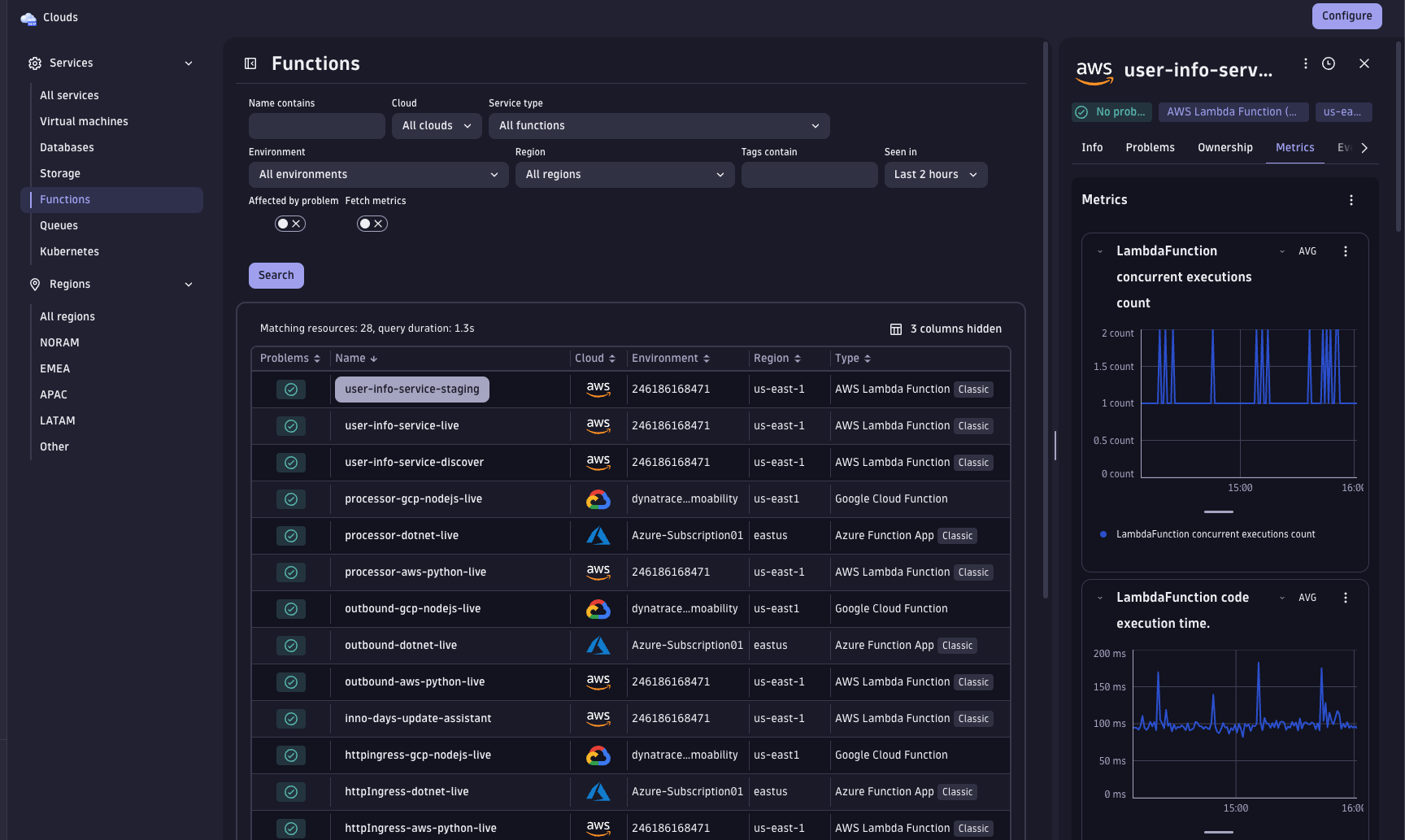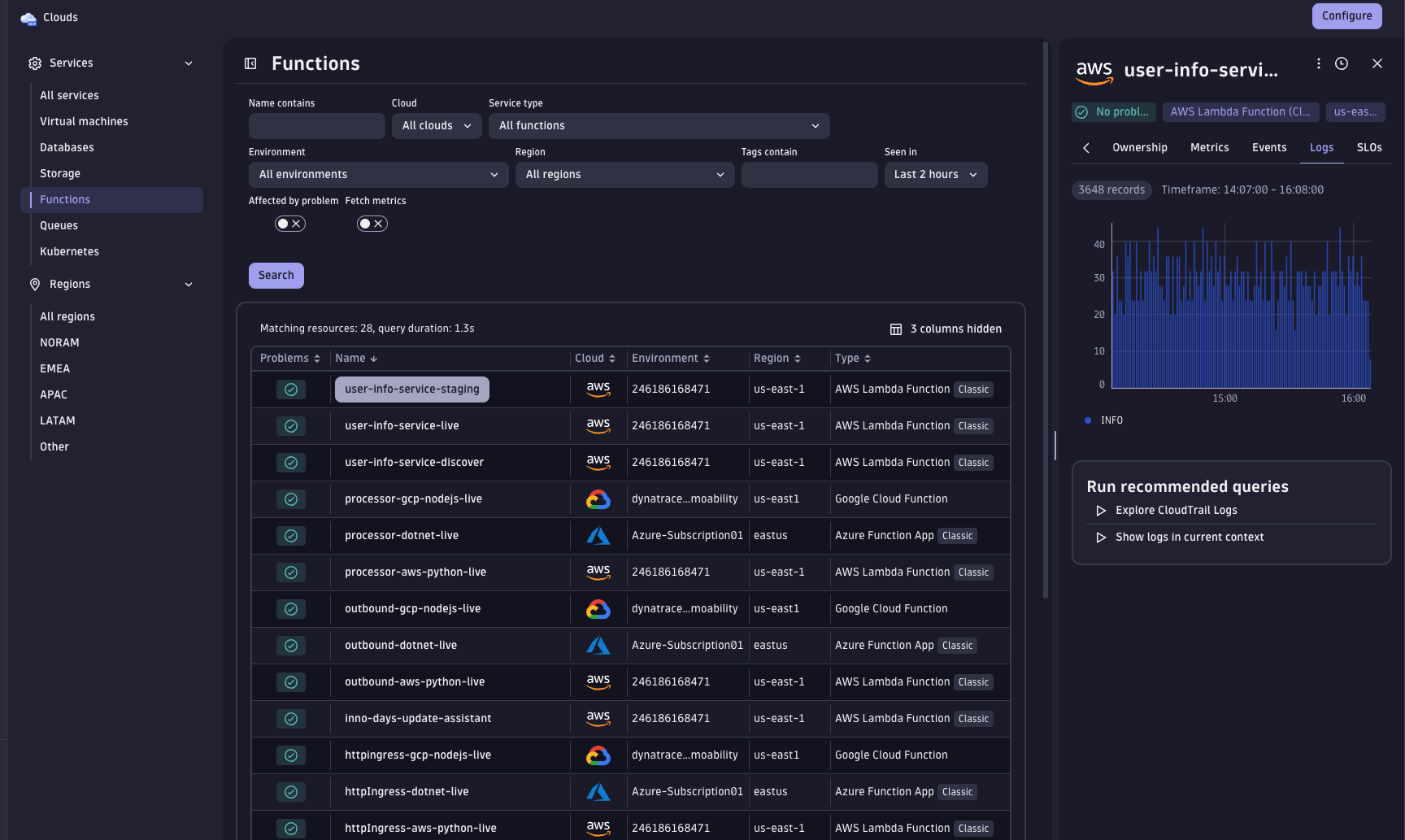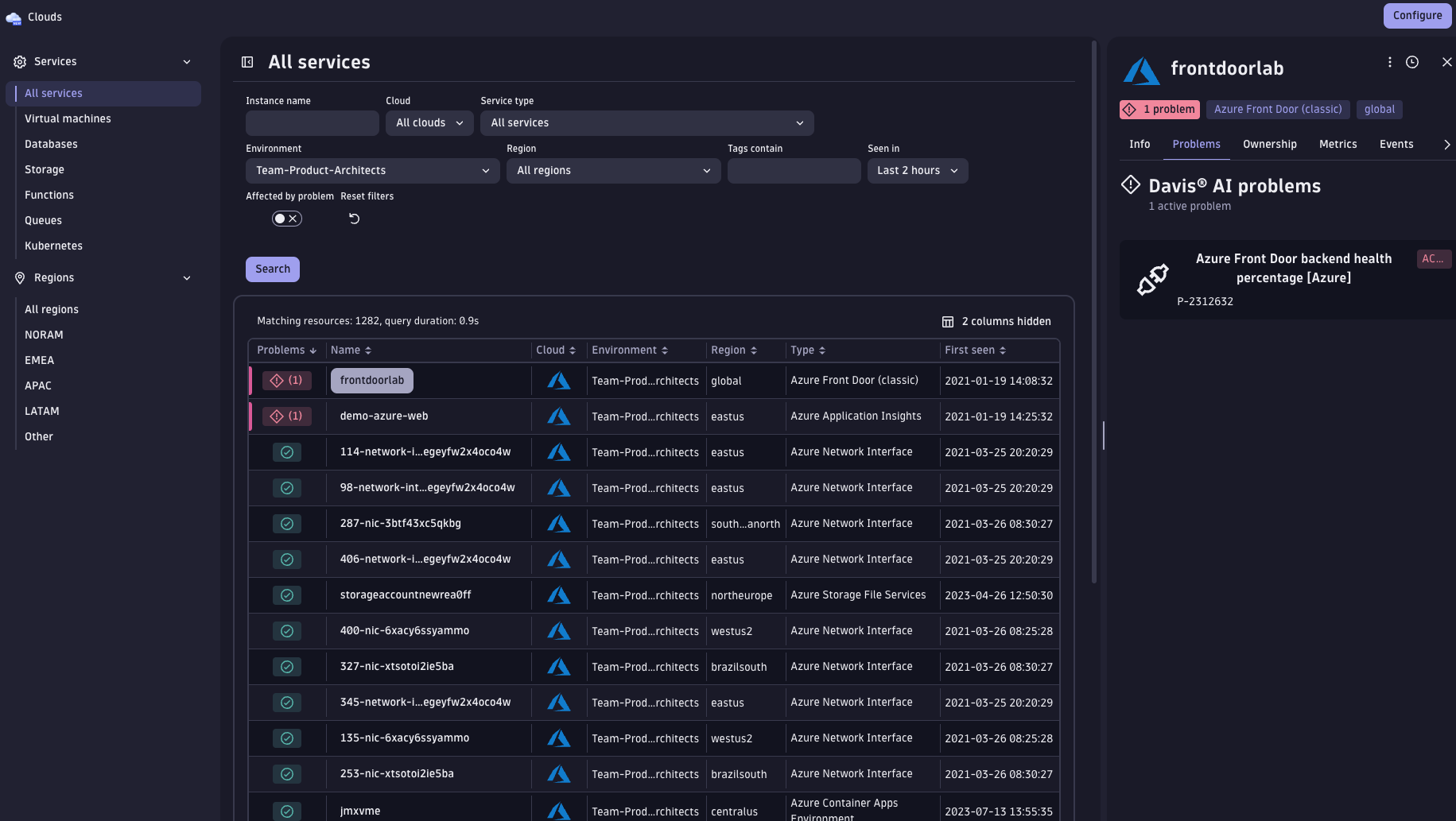Clouds app
- Overview
- 4-min read
Prerequisites
For  Clouds to show ingested data, you need to set up at least one of the following cloud integrations.
Clouds to show ingested data, you need to set up at least one of the following cloud integrations.
Permissions
The following table describes the required permissions.
Installation
Make sure the app is installed in your environment.




When you open the app
- Without prior monitoring of cloud services, the landing page presents you with three cloud providers. If you select one, you'll be redirected to
 Settings Classic to set up monitoring.
Settings Classic to set up monitoring. - With prior monitoring of cloud services, the landing page shows you the default view of all services.
Unified analysis entity details panel
To access the Unified analysis entity details panel, make sure you're on the Explorer tab of  Clouds app. To display it, select the result provided in the Problems or Name column. Unified analysis entity details provides extensive entity information sorted by the following tabs:
Clouds app. To display it, select the result provided in the Problems or Name column. Unified analysis entity details provides extensive entity information sorted by the following tabs:
- Info—provides information on Tags, Properties on a selected entity, as well as the Ownership when you can add or check a team responsible for this environment's governance.
- Problems—if there's an indication of a problem in the Problems column of the table, Unified analysis entity details displays the affected component.
- Metrics—besides displaying the metric charts here, you can open the metrics in Notebooks by selecting
> Open in Notebook. To change the timeframe for these entity details, select the clock .
- Events
- Logs—if there's a log-related problem, this tab provides recommended queries with corresponding issues.
Run recommended queries
You will be charged for viewing each log record via Run recommended queries in the Logs tab. Anything other than that is not additionally charged.
- SLOs
Integration manager tab
The Integration manager tab allows you to see, create, delete, and edit cloud integrations that you already have on your tenant.
After you pass the token generation stage, you'll see all your connections in the table below the AWS connections or Azure connections section.
To switch between your AWS and Azure connections lists, select the cloud provider in the Choose cloud drop-down menu at the top of the page.
To see and edit the details of a specific connection, select its name in the table. The Properties panel is displayed on the right.
- To manage your services under a specific connection, select Manage Services in the Properties panel. It'll redirect you to the Settings page, where you can manage your services.
- Each connection name must be unique within the same cloud connection.
- If you don't need to update the secret key, you can leave the Secret key field empty in Azure connection details.
- If you don't need to update the secret access key, you can leave the Secret access key field empty in AWS key-based authentication connection details.
From Dynatrace version 1.267+, only role-based access can be used. Key-based authorization is no longer available for new credentials. For existing key-based credentials, you can keep using keys indefinitely. We recommend switching to role-based authentication using the dedicated button on the configuration page. Dynatrace automatically checks the configuration to ensure the correct configuration of roles.
Key-based authentication is allowed only for AWS GovCloud and China partitions.
Connect new instance
To create a new connection, select 
In the Connect new instance window, complete the fields and then select Save.
Troubleshooting
Error message: "You do not have enough permissions to manage cloud integrations"
Your feedback matters
Please share your feedback about  Clouds via the dedicated Dynatrace Community thread.
Clouds via the dedicated Dynatrace Community thread.
 CloudsInfrastructure Observability
CloudsInfrastructure Observability
